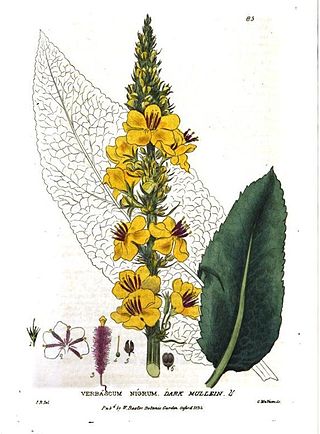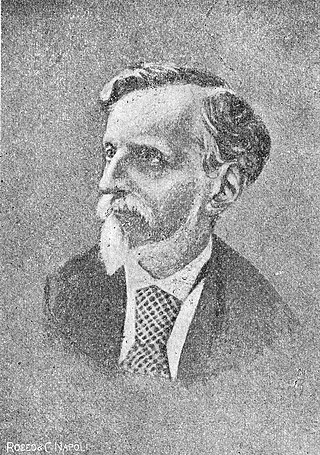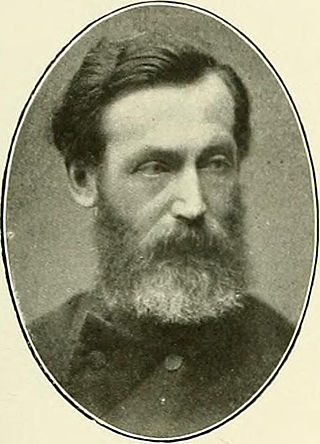Renato Pampanini | |
|---|---|
 | |
| Born | 20 October 1875 |
| Died | 19 July 1949 |
| Occupation | Botanist, mycologist, curator, ecologist, university teacher |
Renato Pampanini (1875-1949) was an Italian botanist and mycologist. [1]
Renato Pampanini | |
|---|---|
 | |
| Born | 20 October 1875 |
| Died | 19 July 1949 |
| Occupation | Botanist, mycologist, curator, ecologist, university teacher |
Renato Pampanini (1875-1949) was an Italian botanist and mycologist. [1]
Pampanini was born in Valdobbiadene, Italy in 1875.
Pampanini studied at the University of Geneva, then in Lausanne and in Friborg. He presented his thesis at the University of Florence.
In addition to his own scientific research, he carried out numerous botanical expeditions, notably to Cyrenaica and other regions of North Africa, to the Rhodes and the Dodecanese islands. He was also one of the first Italian botanists to address issues of environmental protection.
Pampanin died in Vittorio Veneto, Italy in 1949.
The Pampanini herbarium is named for him. It includes more than 5,000 specimens. It is located in the central Italian herbarium of the Museo di Storia Naturale di Firenze. With Augusto Béguinot and Adriano Fiori Pampanini edited and distributed the exsiccata Flora Italica exsiccata. [2] [3]

Johann Müller was a Swiss botanist who was a specialist in lichens. He published under the name Johannes Müller Argoviensis to distinguish himself from other naturalists with similar names.
Christian Friedrich Ecklon was a Danish botanical collector and apothecary. Ecklon is especially known for being an avid collector and researcher of plants in South Africa.

Karl Wilhelm Gottlieb Leopold Fuckel was a German botanist who worked largely on fungi.

François Crépin was an important botanist of the 19th century and director of the National Botanic Garden of Belgium.

William Baxter ALS, FHS, was a British botanist, author of British Phaenogamous Botany and appointed curator of the Oxford Botanic Garden in 1813. From 1825 to 1828 he issed the exsiccata series Stirpes cryptogamae Oxonienses, or dried specimens of cryptogamous plants collected in the vicinity of Oxford. With Philip Burnard Ayres he distributed another exsiccata under the title Flora Thamnensis.
Alessandro Trotter ) was an Italian botanist and entomologist who pioneered in cecidology, the study of plant galls.
Wilhelm G. Solheim I (1898–1978) was a botanist after whom the Wilhelm G. Solheim Mycological Herbarium at the University of Wyoming is named. He issued the exsiccata series Mycoflora Saximontanensis exsiccata (1934-1977), several fascicles (cent.) with George Baker Cummins. His son, Wilhelm G. Solheim II was an archeologist and a senior practitioner of archaeology in Southeast Asia.
Friedrich Wilhelm Schultz was a German pharmacist and botanist who was a native of Zweibrücken.

Vincenzo de Cesati (1806–1883) was an Italian botanist from Milan.

Ferdinand Christian Gustav Arnold was a German lichenologist and taxonomist born in Ansbach, Bavaria. Even as a high school student he showed an active interest in botany: "Ich und August Gattinger ... durchstreiften von November 1846 bis zum Spätherbst 1847, Pflanzen sammelnd, die Landschaft von München nach allen Richtungen.".
Marie Clément Gaston Gautier was a French botanist and agriculturalist.
Boris Konstantinovich Schischkin was a Russian botanist and from 1943 corresponding member of the Academy of Sciences of the USSR. His name was Russian: Борис Константинович Шишкин, with his surname sometimes transliterated as Shishkin.

Hans Höppner was a German botanist and entomologist.
Alphonse Maille was a French botanist.
Henri L. Sudre was a French botanist.
Caro Benigno Massalongo was an Italian botanist who specialized in the field of liverworts. He was the son of paleontologist Abramo Bartolommeo Massalongo (1824-1860).
Ferdinand Paul Wirtgen was a German pharmacist and botanist. He was the son of botanist Philipp Wilhelm Wirtgen (1806–1870).
Adriano Fiori was an Italian botanist.
Oljga N. Dubovik is a botanist. Dubovik's works are collection and description of spermatophytes in Russia and Ukraine. In 1993 she issued no. 201 until 250 of the exsiccata Herbarium florae Ukraine.

Exsiccata is a work with "published, uniform, numbered set[s] of preserved specimens distributed with printed labels". Typically, exsiccatae are numbered collections of dried herbarium specimens or preserved biological samples published in several duplicate sets with a common theme or title, such as Lichenes Helvetici. Exsiccatae are regarded as scientific contributions of the editor(s) with characteristics from the library world and features from the herbarium world. Exsiccatae works represent a special method of scholarly communication. The text in the printed matters/published booklets is basically a list of labels (schedae) with information on each single numbered exsiccatal unit. Extensions of the concept occur.
{{cite book}}: CS1 maint: location missing publisher (link)